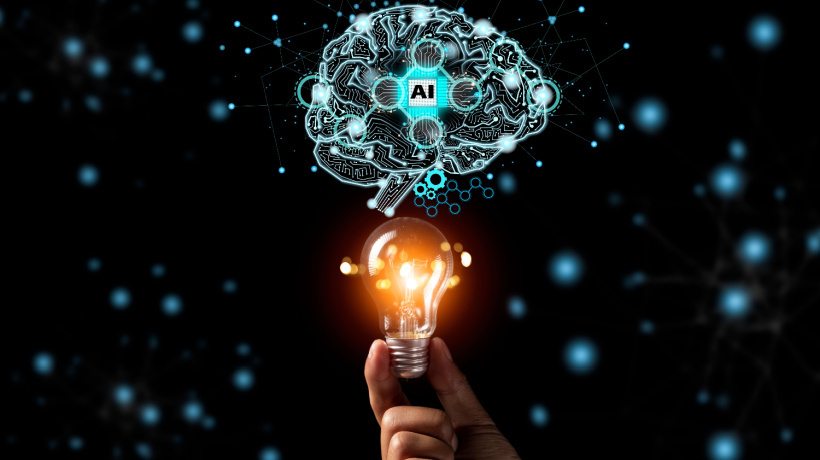Unlocking The Potential Of AI In eLearning To Enhance Education
Artificial Intelligence (AI) has already altered most industries, and eLearning is no different. Using AI, educational platforms can provide customized, efficient, and interesting experiences based on the learning needs of individual learners. The role of AI in eLearning is growing at an unprecedented speed, enabling organizations and educators to develop a more deliberate tool to enhance learning outcomes while still being accessible and fun. To do this, we will look at how AI can improve eLearning and what it is changing in education.
8 Ways AI Can Enhance eLearning Experiences
1. Personalized Learning Paths
One of AI's biggest contributions to eLearning is its ability to tailor learning individually. One key aspect of traditional learning is that it offers the same pace for every learner, which only helps some. Conversely, AI algorithms also look at learner data like preferences, progress, and performance, which means they customize them—but based on their own needs as individuals, rather than a class.
Such platforms powered by AI keep track of user engagement statistics in the form of quiz scores, time taken to complete particular modules, and other areas where learners find it difficult. With these insights, AI can:
- Suggest content to fill knowledge gaps.
- Alter the difficulty level of materials according to each learner's ability.
- Personalize recommendations for other supplemental material, such as interactive exercises or videos.
AI-driven personalization is one method that helps pupils absorb material in their own manner and at their speed, resulting in a more complete learning experience.
2. Intelligent Tutoring Systems (ITS)
Intelligent tutoring systems (ITS) are powerful tools that employ various AI functionalities to deliver personalized real-time feedback and guidance like a personal tutor offers. These systems provide students with around-the-clock learning opportunities and on-demand assistance with less reliance on human instructors for basic queries. Benefits of ITS in eLearning include:
- Immediate feedback
The ITS gives learners immediate feedback on their output, helping them identify and fix errors immediately. - Step-by-step guidance
The ITS methodically takes the learners through steps and develops each learner's understanding. - Adaptive support
Smart tutors identify a student in difficulty and change the difficulty level or provide hints to assist the learner.
An ITS promotes learner confidence. It allows learners to have autonomy and control over their learning. This minimizes the need for constant oversight by human instructors, making it a great resource for both learners and teachers.
3. Streamlined Administrative Tasks
The other side of eLearning that benefits from AI other than the students is the educator. Instead of grading or managing course content, AI helps lighten the load on instructors so they can spend their time making meaningful interactions with students. Here are some of the most important areas in which Artificial Intelligence helps streamline administrative work through the automation of routine tasks:
- Automated grading
AI can score quizzes and assignments and work on essay answers. - Course management
AI platforms can update courses automatically according to learner performance and feedback, an important factor in keeping content relevant. - Scheduling and notifications
AI-backed tools can make scheduling classes, exams, and deadlines easier for students as they can notify the students enrolled, making it much more convenient for educators and pupils to manage time.
With these tasks being handled by AI, the role of educators shifts to giving quality teaching and addressing each student's individual needs rather than doing admin work.
4. Enhanced Engagement Through Gamification
Engagement is critical for effective learning outcomes, and AI makes eLearning more interactive. Gamified learning uses elements like points, badges, levels, leaderboards, etc., to enhance the eLearning experience, and AI makes it possible. Gamification powered by AI offers:
- Customized challenges
Gamified experiences can be personalized based on learners' interests and engagement levels, which AI can excel at here, too. - Reward systems
Through AI, students can automatically receive rewards when meeting certain milestones, which helps them to continue the good work.
Gamification enhances eLearning by engaging and entertaining students, which in turn increases their motivation and participation. The instant feedback that comes with AI gamification also allows for continuous growth and better goal setting.
5. Natural Language Processing (NLP) For Improved Interactivity
NLP stands for Natural Language Processing, one of the subtasks of AI that enables machines to understand and respond to human language. NLP opens the gates of interactivity in eLearning through chatbots, voice recognition, and much more automated language assessment, resulting in a meta-learning approach. When it comes to use cases, NLP provides eLearning with tools, such as:
- 24/7 availability
AI chatbots can answer queries related to learning, provide assistance in assignments, and recommend resources during any hour of the day. - Voice controlled learning
With NLP, voice commands allow students who learn better by audio or need a hands-free option to understand their subjects. - Language assessment
NLP-based tools can help language learners by analyzing their spoken or written material for grammar, pronunciation, and fluency and giving more detailed feedback to help them improve their language skills.
Such features make eLearning interactive and responsive to learner needs, leading to a more engaging learning experience.
6. Data-Driven Insights And Predictive Analytics
The collection and analysis of ample learning data transverse AI to provide education knowledge that directs educational decisions. Predictive analytics, especially, can predict learner outcomes and help flag students who may need more intervention. Using data analysis, AI can:
- Spot trends in learner behavior (which topics they have the most difficulty with, for instance).
- Identify students who are falling behind, warning instructors early to intervene.
- Improve course design to demonstrate the effectiveness and need for improvement of each module.
Such insights provide teachers with the evidence they can use to tailor their teaching approaches and materials to yield higher efficiency, essentially building a better learning environment.
7. Accessibility And Inclusion In Learning
AI makes learning accessible to learners with disabilities. It implements AI tools to adapt content for different needs and demands, creating personalized support. AI-powered solutions such as text-to-speech, and visual recognition improve accessibility for learners with disabilities. Examples include:
- Transcriptions for hearing-impaired learners
AI can transcribe audio and make the content available to deaf students. - Text-to-speech for visually impaired students
Visually impaired students can easily listen to written content using text-to-speech technology. - Real-time translation
AI can translate course material in real time, enabling learners of diverse languages and promoting international syntheses of eLearning content.
AI makes eLearning more accessible, which leads to inclusivity and equal access to educational resources for all students, regardless of their background or ability.
8. Continuous Improvement Through AI-Driven Feedback
Another of AI's great advantages within eLearning is its potential to provide continuous and immediate feedback. Instead of delayed feedback through traditional feedback devices, AI provides instant information about learners' performance and helps them improve quickly.
These AI systems track students' progression and provide immediate feedback on assignments, quizzes, and interactive exercises. This gives students the ability to:
- Identify their mistakes instantly and amend them.
- Recognize learning patterns and recalibrate strategies.
- Know their strengths and weaknesses to make them confident.
The real-time feedback capability of the AI is one element that ensures an interest in learning, continuous student-instructor interaction, and improved learning performance.
Conclusion
AI has revolutionized eLearning, enabling it to be highly personalized yet never compromising on the equity of learning or engagement. AI in the classroom gives educators and learners more confidence with intelligent tutoring systems, automating administrative burdens and allowing for greater interactivity and feedback through data-driven educational insights.
The uses of AI in eLearning will only keep expanding as AI becomes more advanced and capable of providing innovative solutions to improve learning outcomes. For educational institutions, enterprises, and eLearning platforms, adopting AI is the first step towards a brighter, smoother era of an intelligent education system.









